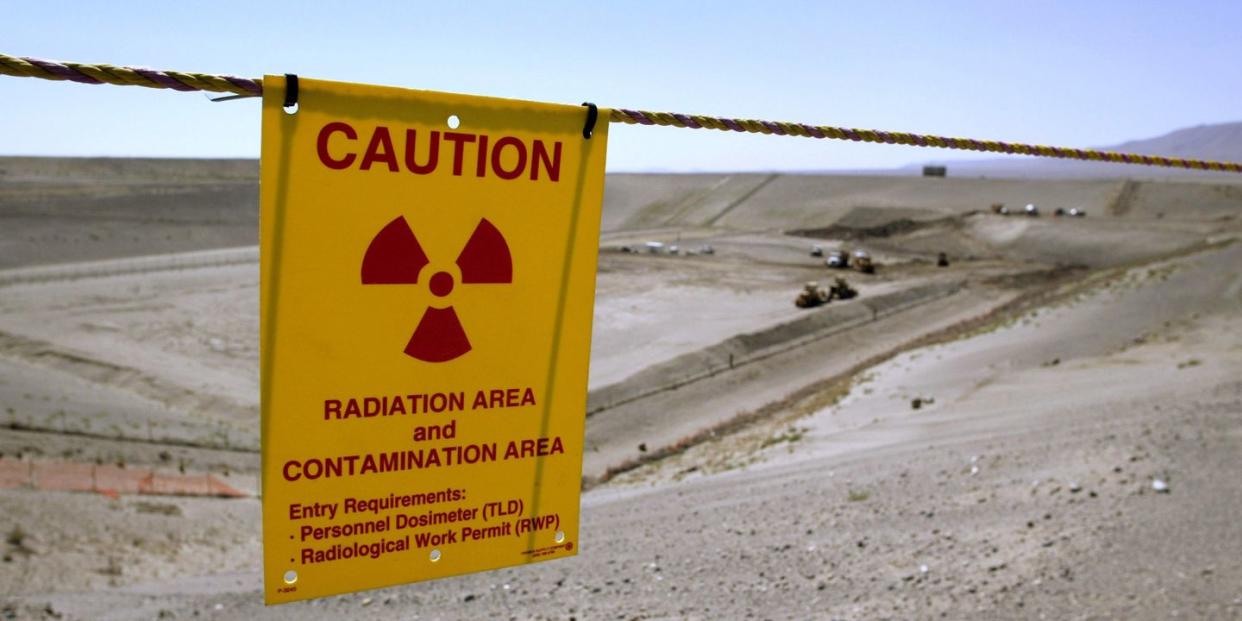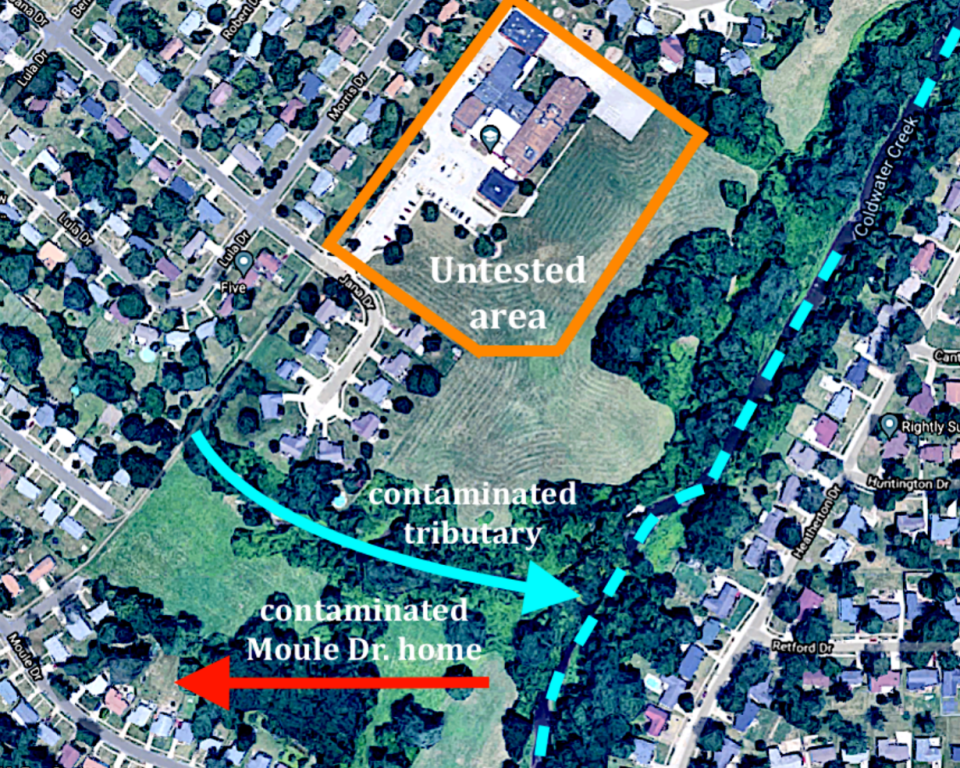‘Unacceptable Levels’ of Radioactive Waste Are Polluting a Missouri Elementary School

Jana Elementary School sits near Coldwater Creek, a waterway known to be contaminated due to nuclear waste byproducts from World War II.
Hazelwood School District must decide how to proceed with reports showing radioactive waste inside the school and on its grounds.
Pollutants came from dump sites near St. Louis Lambert International Airport.
Many of the students at Jana Elementary School, just outside of St. Louis, Missouri, probably haven’t even learned about World War II yet. Now, they’re getting a real-life lesson after an environmental testing company found radioactive contamination in and around the Hazelwood School District building, stemming from the Manhattan Project in the 1940s.
In a report that Boston Chemical Data Corporation issued earlier this month, the firm found “radiological contamination exists at unacceptable levels at the Jana School property.” On August 15, the company took 32 soil, dust, and plant material samples from the school’s library, kitchen, classrooms, HVAC system, field, and playgrounds.
☢️ Science explains the world around us. We’ll help you make sense of it all—join Pop Mech Pro.
Eberline Analytical Corporation of Oak Ridge, Tennessee determined the levels were “far in excess of the natural background” for radioactive isotopes of lead, radium, and polonium. In some cases, the pollution levels were up to 22 times higher than expected for the area. Pollutants were found across the site, from the surface soils on the playground to dust particles inside the building.
Jana Elementary sits near Coldwater Creek, known to be a polluted waterway due to nearby Mallinckrodt Chemical Works’ participation in the Manhattan Project, processing uranium ores for use in nuclear bombs. For more than a decade in the 1940s, the company buried excess nuclear waste from the uranium enrichment effort in various sites in the St. Louis area, two of which contaminated Coldwater Creek. A 20-plus-year project to help clean up the 19-mile tributary of the Missouri River is still ongoing.
The U.S. Army Corps of Engineers previously tested an area near Jana Elementary in 2018 as part of the cleanup effort and found contamination, according to the St. Louis Post Dispatch, but at a level lower than the new report. The 2018 testing also didn’t come within 300 feet of the school building or take samples from within the structure.
Parents from the Hazelwood School District requested the school board further test the school grounds after the Missouri Coalition for the Environment obtained a copy of the 2018 test results through a Freedom of Information Act request; In August, the Hazelwood School Board notified parents that another study would be conducted, though it’s unclear who actually funded the study. The Boston Chemical Data Corp. report says “a significant remedial program will be required to bring conditions at the school in line with expectations.” And the school district now has decisions to make, planning closed-door sessions to decide the future of its students and the school building.
In an October 14 statement posted on Twitter, the district says it’s aware of the report. “Safety is always our top priority, and we are actively discussing the implications of the findings,” the statement says. “The Board of Education will be consulting with attorneys and experts in this area of testing to determine next steps.”

Some of the country’s largest nuclear waste sites sit outside of urban centers. From Yucca Mountain in Nevada to the country’s largest nuclear waste site, Hanford in southeastern Washington, cleanup has been an arduous task. Dealing with seeping waste in urban centers adds an unwelcome wrinkle to the efforts, especially as waterways can carry pollutants.
The U.S. Centers for Disease Control and Prevention (CDC) warns against exposure to radiation, and cautions people to stay clear of contamination. A St. Louis Magazine report from nearly a decade ago chronicled potential cancer outbreaks within the community tied to students attending schools near Coldwater Creek.
The use of potassium iodide (KI) is commonly associated with radiation exposure. However, the CDC says “people should only take KI on the advice of public health or emergency management officials” due to the health risks associated with taking KI. The KI pills are only potentially effective in protecting the thyroid from radioactive iodine and does not protect against all kinds of radioactive materials.
You Might Also Like


